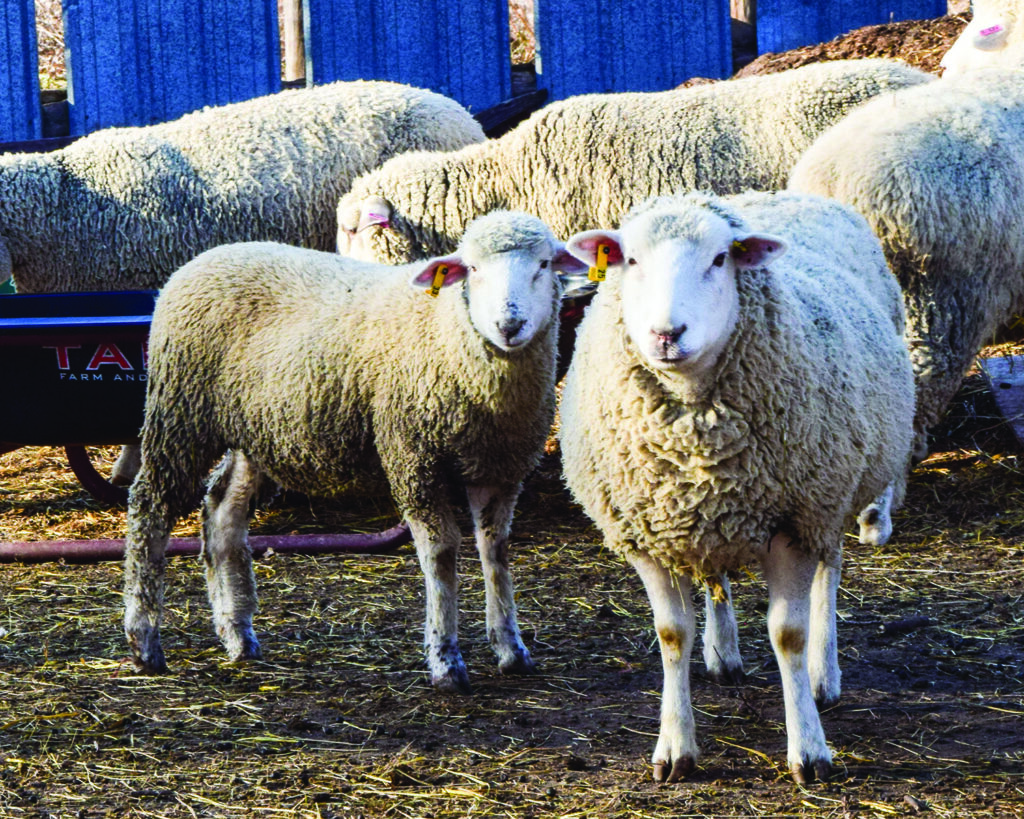
Sheep will be allowed to graze at the north edge of Moorhead in a pilot project endorsed by the City Council Monday. (File photo/The Extra.)
Nancy Edmonds Hanson
Sheep will be permitted to graze on part of the 113-acre Oakport Prairie owned by the Buffalo Red River Watershed District on the north edge of Moorhead starting next May. The pilot project is cosponsored by the district along with the nonprofit Harvest Hope Farm and Audubon Dakota.
Unanimously approved by the Moorhead City Council Monday, the five-year pilot permits a maximum of 40 sheep to graze on the public land within the northern edge of the city limits – as an experiment in natural management of the restored prairie environment. The permission will expire in 2026 unless renewed by the council.
Community development director Kristie Leshovsky termed the proposal, which has been under discussion for more than a year, as a “unique item.” Jason and Lynn Kotrba of Harvest Hope Farm have been working with Audubon Dakota and the watershed district, working together since 2015 to replant and manage more than 1,000 acres of natural prairie along the river. The Kotrbas, whose 13-acre farmstead lies near the prairie tract, propose to start the experiment next May, pasturing 30 of their special sheep – bred as a source of an experimental blood component considered a potential treatment for Huntington’s disease – on 26 acres within the acreage.
Leshovsky reported the three organizations have been working with neighbors to refine their proposal after some initial objections. Those negotiations resulted in reducing the maximum number of sheep from 100 to 40, eliminating accessory buildings, insuring the health of the sheep through veterinary care, and establishing a 50-foot setback from all property lines.
An Audubon Dakota information piece about the project addressed another question: “Keeping the park available for hiking, photography and hunting is important to all the partners involved in this project. The fencing for sheep in the central unit where photography is popular will be removed when the sheep are not there. The sheep will return home” [to Harvest Hope Farm] “well before archery season begins, and so will not interfere with hunting. Only 26 acres of the 113-acre property will be grazed, leaving the vast majority unimpeded for enjoyment by everyone.”
Council member Deb White said she was especially pleased to see how the applicants have worked to address neighbors’ concerns. “This has the potential to be a great way to gather information on how goats and sheep can help alleviate invasive species in our public lands,” she observed, adding that the practice has been adopted by some other Minnesota cities and is in line with Minnesota GreenStep Cities best practices.
“We want to start small and work our way up,” Jason Kotrba told the council. “We intend to be good stewards, managing our sheep and the adjacent area well.” The flock will include “mamas who know what to do,” he added, “rather than babies who run and jump all over.”


